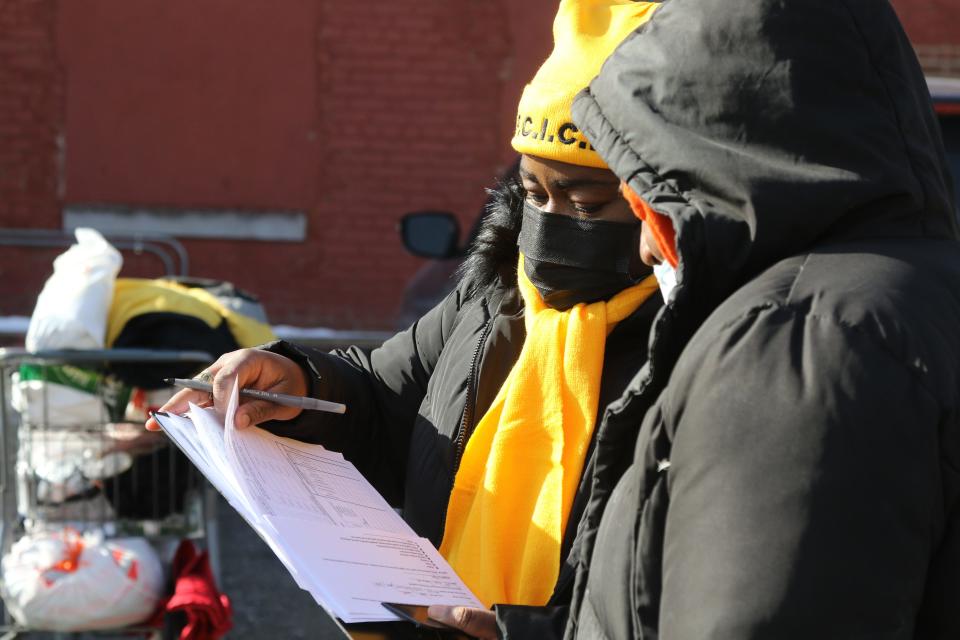'It's a willingness issue': This is why some Paterson homeless won't seek shelter
PATERSON — In the basement of St. Paul’s Church on Broadway, there almost always are openings among the 40 beds at the shelter for homeless men, even in the middle of winter.
Meanwhile, just blocks away, people sleep in makeshift squatters’ camps near the railroad tracks that slice through Paterson’s troubled 4th Ward. They are part of a group that social service agencies call “unsheltered homeless persons,” those who fend for themselves outside the extensive system of emergency housing programs in New Jersey’s third most populous city.
A statewide report issued this week put the total number of homeless people in Paterson at 245, including 181 who are classified as “sheltered” and 64 listed as “unsheltered.”
With dozens of open beds available at various programs in Paterson, why aren’t those 64 “unsheltered” homeless persons staying indoors as well?
“It’s not a capacity issue, it’s a willingness issue,” said Richard Williams, executive director of the St. Paul’s Community Development Corporation, the nonprofit group that runs the 40-bed shelter in the church basement. “Many individuals are not interested in going into a shelter environment.”
Earlier in 2022:Homeless shelters in NJ fear 'scary' future once eviction ban ends
Williams said St. Paul’s shelter requires its clients to submit to drug tests and to stay clean. Not everyone is willing to submit to those requirements, he said. As a result, the shelter tends to have a vacancy rate of about 20%, even in the winter, he said.

Williams isn’t the only person who sees Paterson’s opioid epidemic as fueling its homelessness problem. When Paterson Press this week asked Mayor Andre Sayegh for his plans for reducing homelessness in the city, the first two initiatives he cited were programs to get addicts off drugs.
Sayegh first mentioned RealFix, funded by a $1 million private grant, which the mayor says will provide addicts in crisis with suboxone, a medication designed to block the effects of opioid withdrawal as well as subsequent cravings for the drugs. RealFix is scheduled to start later this autumn.
More:Paterson gets $1M to fight opioid addiction with RealFix medication initiative
Paterson also is expanding its Opioid Response Team, the mayor said. Under that program, substance abuse outreach workers team up with paramedics and police officers in setting up temporary treatment referral stations on Paterson’s most drug-plagued streets.
Story continues below graphic.
“My administration has taken a multi-faceted approach to addressing the root causes of homelessness,” Sayegh said. “My team will continue to seek out and evaluate data regarding homelessness in Paterson so we can better understand the causes and how to meaningfully address them,” he added.
The report that put Paterson’s homeless population at 245 was from the NJ Counts 2022 initiative, a cooperative arrangement among Monarch Housing Associates, social service providers and local governments around the state. The report is based on a massive effort to count the number of homeless people in New Jersey on one day in late January. This year that day was Tuesday, Jan. 25.
In 2021, NJ Counts put the number of homeless persons in Paterson at 176 and in 2000 at 424. Monarch Housing warns against making year-to-year comparisons of the recent numbers because COVID-19 changed the way the counts were conducted.
Affordability and rent:NJ tops list of costliest rental markets, and the reality is worse than the numbers show
The recent report said Paterson accounted for 71% of Passaic County’s 345-person homeless population. The next highest towns were Clifton with 41 homeless persons and Passaic with 38.
NJ Counts said 126 of the Passaic County homeless persons counted in January said they suffered from substance abuse and 40 said that drug and alcohol abuse was the primary reason they are homeless.
All the people who were unsheltered in Passaic County were adults without children, the report said. But the study did identify 66 children ages 17 and younger in Passaic County who were homeless, all of whom were staying in emergency shelters on the night of the count.
One of those facilities is the family shelter run by the Paterson Task Force. That program has space for 20 families with a total of 60 beds, said Task Force executive director Lana Stokes.
Paterson’s homeless problem persists despite the fact that hundreds of new apartments have been built in the city in the past four years, many of them in the city’s impoverished neighborhoods in the 1st, 4th and 5th Wards.
“It’s beyond their means,” Stokes said when asked why all the new housing construction hasn’t reduced Paterson’s homeless ranks.
Experts say they fear that New Jersey could be facing a growth in its homeless population. Local governments during the past two years reaped an infusion of federal COVID-19 relief funding and some places used that money for emergency housing programs, said Kasey Vienckowski of Monarch Housing Associates. As the relief funds dry up, there likely will be fewer emergency housing slots available, she said.
The other looming factor is the end of New Jersey’s moratorium on tenant evictions for unpaid rents, Vienckowski said.
“We’re going to have people who have no place to go,” she said.
Joe Malinconico is editor of Paterson Press. Email: editor@patersonpress.com
This article originally appeared on NorthJersey.com: Paterson NJ homeless census includes unsheltered who stay outside

